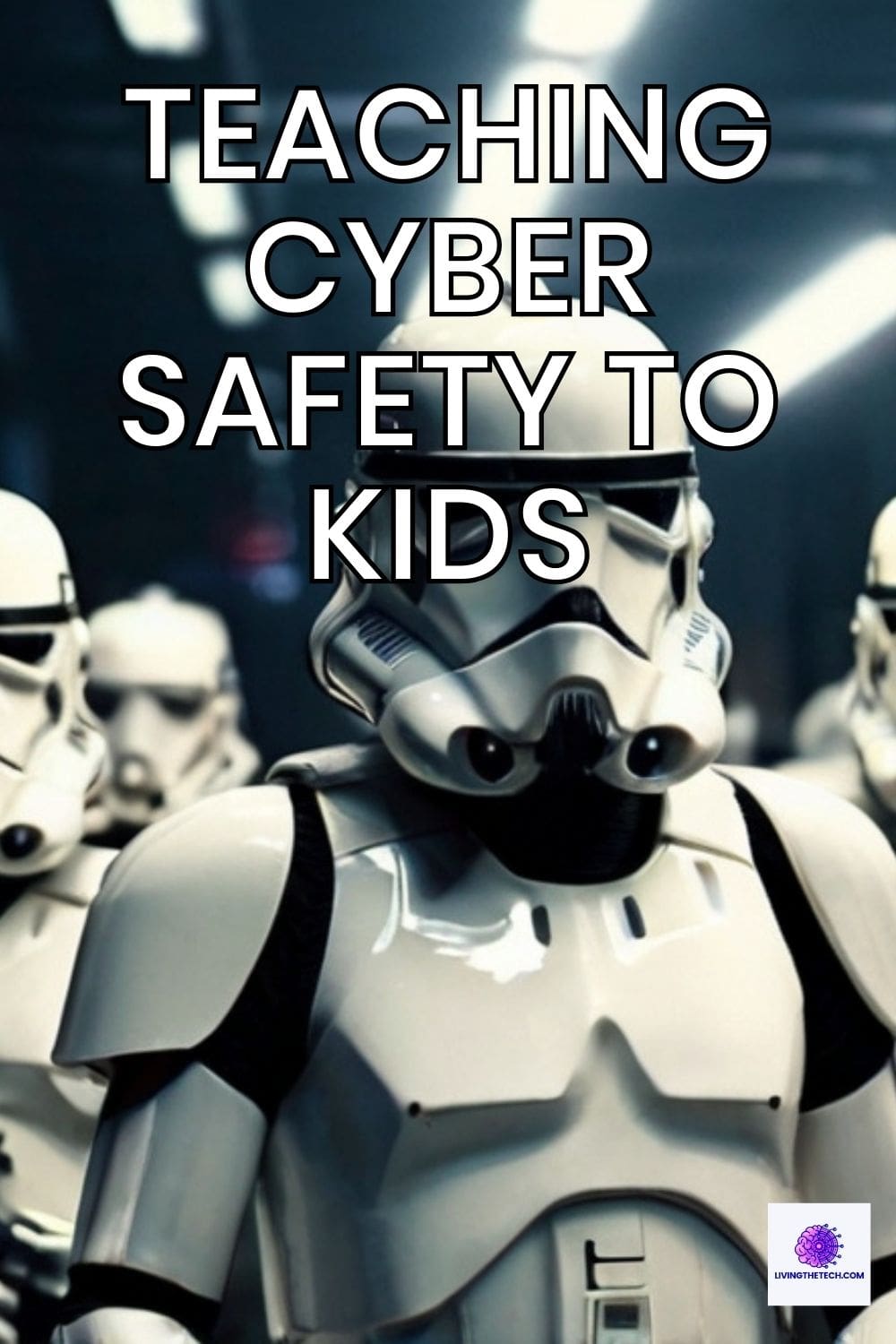Teaching Cyber Safety to Kids: Smart Steps for Safer Online Habits
In today’s digital age, ensuring that children are safe online has become a crucial responsibility for parents and educators alike. With 93% of teens using the internet and an increasing number of younger children gaining access to online platforms, it’s essential to educate them about cyber safety. This blog post will explore five effective strategies for digital parents to use to teach their kids how to navigate the online world safely, protecting their privacy and wellbeing.
Looking to build a stronger digital foundation for your kids? Explore this guide on digital literacy for kids in today’s world.
Affiliate links are in this post, more information in disclaimer
Understanding the Importance of Cyber Safety Education
Before diving into the strategies, it’s important to understand why cyber safety education is necessary. The internet offers vast educational resources and entertainment, but also poses risks such as cyberbullying, exposure to inappropriate content, and potential privacy breaches. Educating children about these risks empowers them to make informed decisions online.

1. Start the Conversation Early
One of the most effective ways to teach cyber safety is by starting the conversation early. Children are accessing digital devices at increasingly younger ages, making it vital to introduce concepts of online safety as soon as they begin using the internet.
Age-Appropriate Discussions
As digital parents, it is important to tailor your discussions to the child’s age and understanding. For younger children, use simple language and examples they can relate to, such as comparing online interactions to playground rules. As they grow older, you can introduce more complex topics like privacy settings and the importance of strong passwords or passphrases.
Interactive Learning
Utilise interactive tools and games designed to teach cyber safety. Websites like NetSmartzKids offer engaging, age-appropriate content that educates children while keeping them entertained.
2. Set Clear Rules and Guidelines
Establishing clear rules and guidelines for internet use is crucial in teaching kids how to stay safe online. These rules should be specific, enforceable, and discussed openly with the child to ensure they understand and agree to them. This could be included as part of a digital family agreement.
How to create a digital family agreement: Creating a Digital Family Agreement: A Step-by-Step Guide
Internet Usage Schedule
Set a schedule for when and how long children can access the internet. This helps in managing screen time and ensures they engage in other activities, promoting a balanced lifestyle. My preferred way of doing this is to automate when the home wi-fi is turned off and on at set times during the day.
Device-Free Zones
Designate certain areas in the house as device-free zones, such as the dining room during meals. This encourages family interaction and reduces the chance of unsupervised online activity.
Need more help with Kids Online safety? Kids Online Safety: 12 Must-Follow Tips for Digital Parents
3. Teach the Basics of Privacy and Security
Understanding privacy and security basics is fundamental to cyber safety. Children should be aware of the importance of keeping personal information private and recognising secure websites. Here are some examples of information your children (and adults) should not freely share online:
- Home Address: Sharing your home address can lead to privacy breaches and safety risks.
- Phone Number: Posting a phone number publicly can expose you to unwanted contact or potential scams.
- Passwords: Never share passwords for any account, as this compromises your personal security and data.
- Financial Information: Details like credit card numbers or bank account information should never be shared online to prevent fraud or identity theft.
- Personal Identifiers: Avoid sharing things like full birthdates or passport details, as they can be used for identity theft.
I always say to my children that if people in online chat when gaming ask where they are from, you can give the Country, no more information is needed.
Most People Fail at Password Security, Don’t Be One of Them
A critical part of cyber safety is to teach children the importance of creating strong, unique passwords. Please encourage them to use a combination of letters, numbers, and symbols, and remind them not to share passwords with friends or anyone online.
Parents, you might want to check out my other blog article on Password Security: 3 Must-Follow Steps for Parents.
Recognising Secure Websites
Show children how to identify secure websites by looking for “https” in the URL and a padlock icon. Explain that these indicators mean the site is more likely to be safe and trustworthy. It’s not always guaranteed, but there are other signs:
✅ 1. Look for HTTPS in the URL
Secure websites use HTTPS, not just HTTP. The “S” stands for secure and means the site encrypts data between your browser and the server.
- Example:
https://example.com= ✅ Secure http://example.com= ❌ Not secure
🔒 2. Check for the Padlock Icon
You should see a padlock icon in the address bar before the URL. Click it to view certificate info and verify who owns the website.
🛡️ 3. Check the Site’s SSL Certificate
Click the padlock to check the SSL certificate. A valid certificate means the site has been authenticated and encrypts data.
🧑💻 4. Review the Website Design & Content
Phishing or fake sites often look outdated, have typos, or broken images. A legit business will have polished, consistent branding and content.
🔍 5. Check Contact Info & Privacy Policy
Secure and reputable sites display contact details, a physical address, and a clear privacy policy—usually in the footer.
🧠 6. Watch for Pop-Ups and Unusual Requests
If the site asks for sensitive info too quickly (like your credit card number on the home page) or uses shady pop-ups, that’s a red flag.
4. Encourage Open Communication
Fostering a culture of open communication is vital in ensuring that children feel comfortable reporting any online issues they encounter. Whether it’s cyberbullying, contact from strangers, or exposure to inappropriate content, they should know they can talk to a trusted adult.
Regular Check-Ins
Schedule regular check-ins with your child to discuss their online activities. Use these sessions to address any concerns they may have and to reinforce the idea that they can always come to you with questions or problems.
Role-Playing Scenarios
Engage in role-playing exercises to help children practice responding to various online situations. This can build their confidence in handling real-life scenarios and reinforce the importance of seeking help when needed.
5. Lead by Example
Kids often mimic the behaviour of adults, making it crucial for parents and educators to model good cyber hygiene. Demonstrating responsible online behaviour can have a lasting impact on a child’s digital habits.
Mindful Sharing
Be mindful of what you share online, especially on social media. Explain to children how sharing too much personal information can lead to privacy issues and why it’s important to think before posting. Also, as parents, please be mindful of the pictures you share online of your children. As they get older, please ask them if it ok to put a picture of them on your social channels.
Secure Your Devices
You can’t have cyber safety without showing your children how you secure internet-facing devices with passwords and antivirus software. This reinforces the importance of protecting personal information and maintaining privacy. Please make sure the devices you use to access the internet have anti-virus software installed on them, as it will significantly reduce the risk of falling victim to cyber threats, keeping your data and devices safe. Why install anti-virus software on your devices, I hear you say:
- Prevent Malware Infections: Antivirus software helps detect and remove malicious programs before they can harm your system or steal sensitive data.
- Protect Personal Information: Antivirus software guards against cyberattacks designed to steal personal information like passwords, financial details, or identity data.
- Block Unsafe Websites: Many antivirus programs come with web protection features that prevent you from visiting dangerous or fraudulent websites.
- Real-Time Protection: Antivirus software continuously monitors your device, providing real-time protection against new and emerging threats.
- Safeguard Your Device’s Performance: Malware can slow down your device and cause crashes. Antivirus software helps keep your device running smoothly by preventing these issues.
I have written another article on the anti-virus software (Trend Micro, click link to purchase) I use: Parenting in a Digital World – How to Protect Your Computers.
Cyber Safety Education Never Stops
Teaching cyber safety to kids is a continuous process that requires patience, understanding, and consistent reinforcement. By implementing these five strategies, parents and educators can equip children with the knowledge and skills they need to navigate the digital world safely. Start conversations early, set clear guidelines, teach privacy basics, encourage open communication, and lead by example to ensure children understand the importance of staying safe online.
Remember, the goal is to empower children, not to instil fear. With the right guidance, they can learn to enjoy the benefits of the internet while protecting themselves from potential risks. Cyber safety is a multi-layered approach, where no one thing will work in isolation; education, awareness and tech must work together with clear communication so kids feel safe in talking to parents, teachers and family about what they see online.
Disclaimer
The views and opinions expressed in this blog are solely my own and reflect my personal experiences as a digital parent to two teenage, online game-playing boys. While I strive to provide helpful information and share what has worked for me, please remember that everyone’s situation is unique. The content provided here is not intended as professional advice. If you require specific guidance or support, I strongly encourage you to seek assistance from qualified professionals in the relevant field.
This post contains affiliate links, which means I may earn a commission if you make a purchase through these links. Please note that I only recommend products that I believe will add value to my followers. Your support helps keep this content free. Thank you for your understanding and support, more information in Disclaimer!




